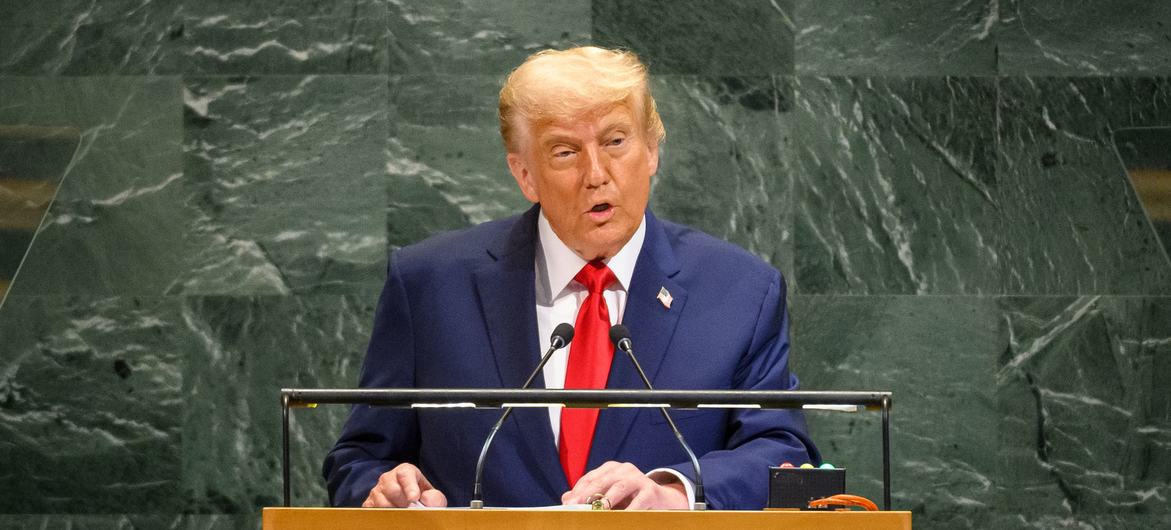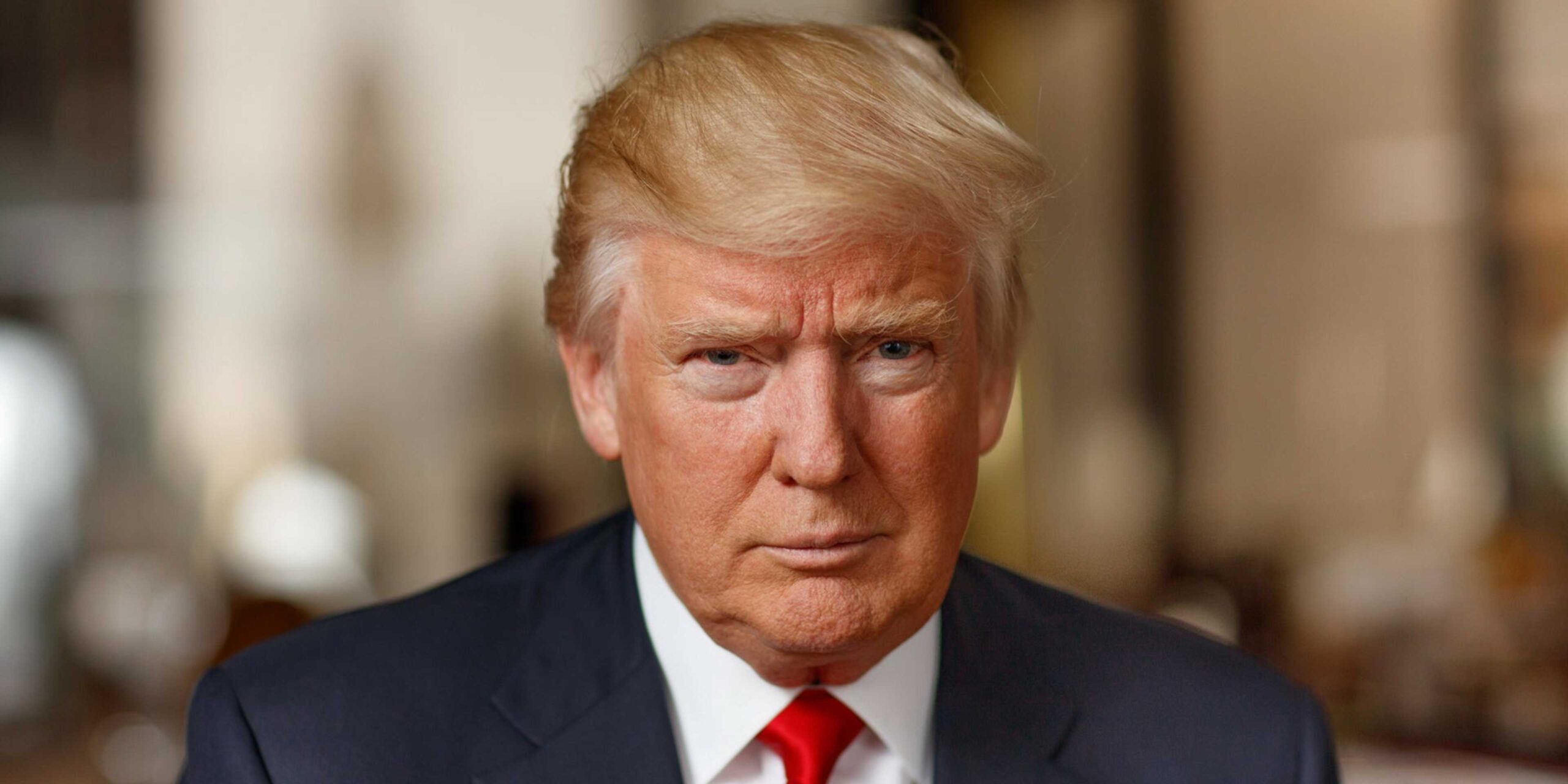Is Trump’s economic agenda in peril? Supreme court challenges his use of emergency powers for global tariffs

President Donald Trump delivers a controversial address at the 80th UN General Assembly in New York City. Image Credit: UN Photo/Loey
The Supreme Court has thrown a major wrench into President Donald Trump’s second-term economic blueprint as justices cast doubt on his use of a decades-old emergency law to impose sweeping tariffs on more than 100 countries. The justices’ line of questioning signaled skepticism over whether Trump had overstepped his authority under the International Emergency Economic Powers Act (IEEPA) of 1977 — a law typically reserved for national security crises, not broad economic policies.
During Wednesday’s nearly three-hour hearing, both conservative and liberal justices appeared uneasy with the administration’s assertion that the president could unilaterally impose tariffs without congressional approval. The court’s conservative majority — usually sympathetic to executive power — was notably split, with Chief Justice John Roberts, Justice Amy Coney Barrett, and Justice Neil Gorsuch expressing concerns about the legality and scope of the move.
Justice Barrett questioned whether Trump’s “across-the-board tariffs” could reasonably fall under the emergency statute’s intent. Chief Justice Roberts echoed that sentiment, noting that the authority Trump claims “seems major” and therefore might violate the major questions doctrine, a legal principle requiring clear congressional authorization for actions with far-reaching economic consequences.
The Legal Crossroads: Power vs. Oversight
Trump’s administration argues that the 1977 law grants him broad discretion to regulate foreign trade in times of crisis, pointing to trade deficits and import dependency as economic emergencies. Solicitor General D. John Sauer defended the tariffs as “regulatory, not tax-based,” and insisted that they are “more effective if no one ever pays them.”
However, opponents — including small business coalitions, state governments, and conservative think tanks — contend that Trump’s move not only misuses emergency powers but also undermines the constitutional separation of powers, which assigns taxation and tariff decisions to Congress.
Lawyers representing businesses and states say the tariffs have forced companies to raise prices, lay off staff, and disrupt supply chains. Oregon’s Solicitor General Benjamin Gutman, representing states challenging the tariffs, quipped that the administration’s interpretation of the law “turns economic regulation into a different kind of pastry — one with no center.”
Economic and Political Stakes
The stakes are monumental. A ruling against Trump could dismantle one of his administration’s signature economic tools — the same mechanism used to impose tariffs on Canada, Mexico, China, and even U.S. allies like Brazil. Markets are watching closely: by midday Wednesday, prediction markets showed only a 22% chance that the Supreme Court would uphold the tariffs, down sharply from earlier in the day.
Economists warn that striking down the tariffs could trigger short-term volatility but potentially ease inflationary pressure in the long term. Meanwhile, corporate leaders like Pandora CEO Alexander Lacik have publicly called the tariffs “a nuisance,” saying their removal would be welcome relief for global manufacturers.
If the justices rule that Trump exceeded his authority, it could also redefine the boundaries of presidential economic powers, setting a precedent that limits how future presidents wield emergency laws for non-security-related policies.
A Divided Court, An Uncertain Outcome
The ideological lines are blurry. Justices Thomas and Alito seemed firmly in Trump’s corner, while Kavanaugh appeared cautiously supportive. The three liberal justices — Sotomayor, Kagan, and Jackson — strongly questioned whether the president can “tax Americans without congressional approval.”
Justice Sotomayor highlighted the constitutional issue at the heart of the case: “If citizens are being asked to pay more, it should come through a bill approved by Congress — not through executive fiat.”
As the case awaits decision in the coming weeks, one thing is clear: the Supreme Court’s ruling will not just determine the fate of Trump’s tariffs, but also define the limits of presidential power in economic governance for years to come.
FAQ Section
Q1: What law did President Trump use to justify the tariffs?
He relied on the International Emergency Economic Powers Act (IEEPA) of 1977, a statute designed to give presidents flexibility during national emergencies — though it has rarely been used for economic trade disputes.
Q2: What is the major questions doctrine?
It’s a legal principle stating that if a government action has vast economic or political implications, Congress must have clearly authorized it. The Supreme Court has recently used it to strike down policies by both Trump and Biden.
Q3: What are the economic effects of these tariffs?
Businesses report increased costs and reduced competitiveness. Economists argue that while the tariffs protect certain domestic industries, they have contributed to inflation and strained global trade ties.
Q4: When is the final ruling expected?
The Supreme Court’s decision could come within a few weeks or months, potentially reshaping U.S. trade policy.



